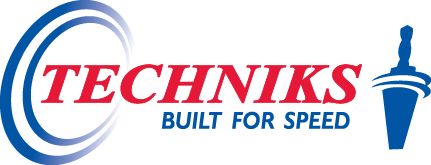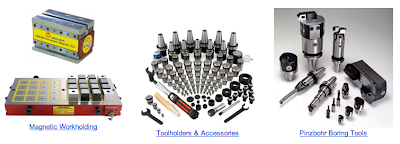The
sPINner deburring system uses a magnetic field, so there are several factors to
bear in mind when processing parts with a magnetic property. This document will
help explain the variables to factor in when processing or evaluating magnetic
parts.
The
parts will “stick” to the bottom of the container:
When
magnetic parts are introduced in the sPINner, they will be attracted to the
magnetic field. As the magnetic field is concentrated to the bottom of the
container, the parts will tend to “stick” to the bottom and the media will move
around the part. Non-magnetic parts will tend to tumble with the media in a
circular motion. Magnetic parts (depending on size and material) will tend to
move slowly along the bottom of the container during machine operation in the
opposite direction of the flow of media. This is caused by the parts trying to
keep up with a very fast moving magnetic field. Heavy part or parts with very
sharp edges that are pulled along the bottom of the container by the magnets
may score the container and may wear through the container over time. If this
happens the container will need replaced. Also fixturing the parts can limit
their movement and decrease the wear on the container. See below the Fixturing
section for more details.
The
parts will stay in the magnetic field:
Parts
with a magnetic property will be attracted to the magnetic field at the bottom
of the container. The parts will stay in the strongest parts of the field during
operation. The parts will tend to “line-up” with each other during processing.
As the parts are responding to the magnetic field, they will attract other
magnetic items in the container. This includes the magnetic media and other
magnetic parts. The result is the parts developing a layer of media around them
during processing and parts sticking to each other during processing.
Single
layer of parts:
As parts with a magnetic property
will tend to attract other magnetic items in the container including other
parts, only a single layer of parts should be added to the container at a time.
If parts are allowed to stack on top of each other, they will “stick” to each
other and may prevent areas from being exposed to the media.
Again,
a fixture may be required to insure the parts do not damage each other during
processing.
Fixturing:
Sometimes
it helps to fixture the parts in the processing container. This can provide
some benefits and eliminate some issues that can arise when processing magnetic
parts. Fixturing parts can keep them in the flow of the media to insure the
parts are being subjected to the action of the media. Also, fixturing the parts
will help keep them separated preventing any damage from other parts and
eliminating any void areas (areas where the media cannot get to) from parts
”sticking” to each other.
Types
of Fixtures:
There are as many different types of fixtures as there are different
parts. Below are some common fixture
types that can either provide a station for each part or simply “cage” of
“harness” the parts.
These
fixtures are placed in the processing container. Since the parts can no longer
contact each other during processing, the potential to damage each other is
eliminated. The associated batch size is limited to the number of stations on
the fixture. Please note, many different designs of fixtures are possible and
the design is dependent on the specific application. Precision Finishing can
help design and build a fixture for any application. Call us for details.
Machine
Speed: In
order to minimize the cushioning effect of a layer of media around the part,
the spin rate of the magnetic field may need to be slowed to about 30-40 Hz.
ID
burrs are difficult with magnetic parts:
Because the sPINner uses a magnetic
field to impart energy to the media as opposed to gravity or vibration, one
advantage of the system is the ability to deburr ID areas. This benefit is
primarily limited to non-magnetic parts. For a
Heat
build-up:
During
processing the friction of the media and the parts will produce heat. For
non-magnetic parts the amount of heat is less than that of magnetic parts. The
reason is that the magnetic parts create vibration that generates heat.
Processing times of 30 minutes and longer in the sPINner on magnetic parts will
generate heat and the contents of the container should be allowed to cool prior
to handling.
Compounds:
There
are several materials that magnetic parts may be made of that will need a
compound other than the soap and water solution typically used in the sPINner.
When rust of other corrosion is a concern, a compound should be chosen that has
an inhibitor. The results from using various compounds may vary greatly and
should be carefully tested prior to mass usage. When using a compound other
than the compounds provided by Precision Finishing, make sure to use a compound
that has a flash point above 180° F. Also, make sure to try
the compound in a little media first to help determine the effects on the
media.
Please contact us at 317-842-8934 to discuss any specific
application or if we can help provide any additional information on processing
magnetic parts.







